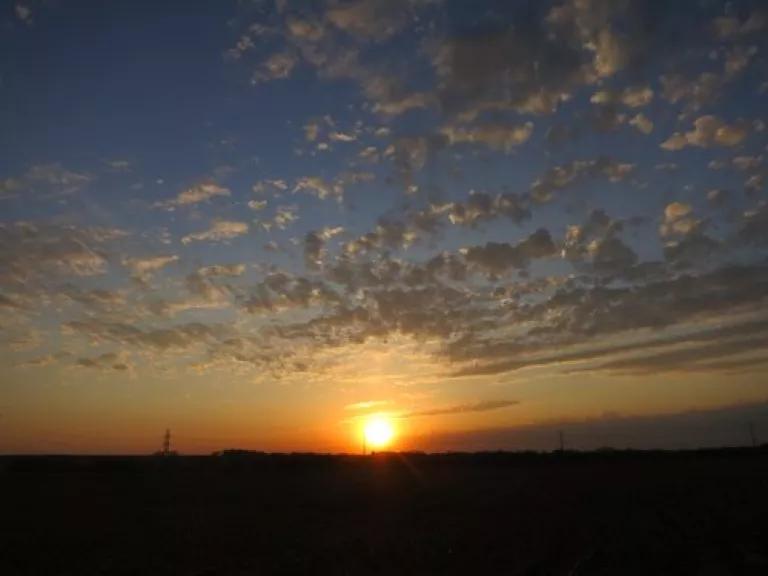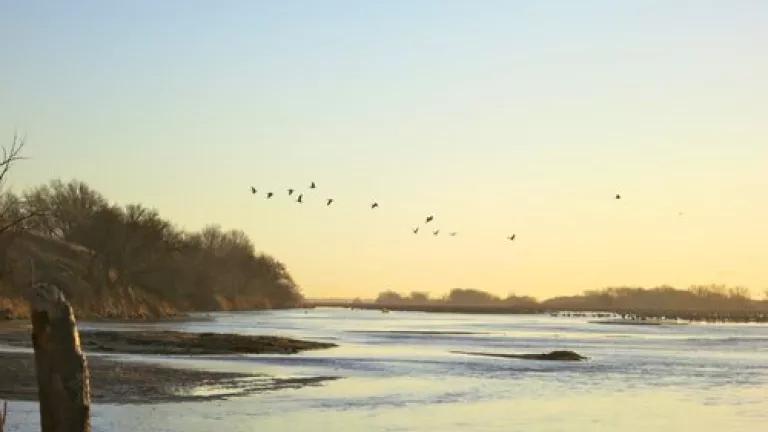
I traveled back to the Cornhusker State recently, and saw the clear signs of spring.
The Sandhill Cranes were in the throes of their migration--a magnificent sight if you ever have the opportunity to witness it.
Each year, half a million of these four foot tall ancient-looking creatures stop in Nebraska on their way to their breeding grounds in Northern Canada, Alaska, and Siberia. They huddle together on the Platte River's sandbars during the night, then fly out en masse to the nearby fields to feast, dance, and make a whole lot of noise during the day, before returning to the sandbars to rest.
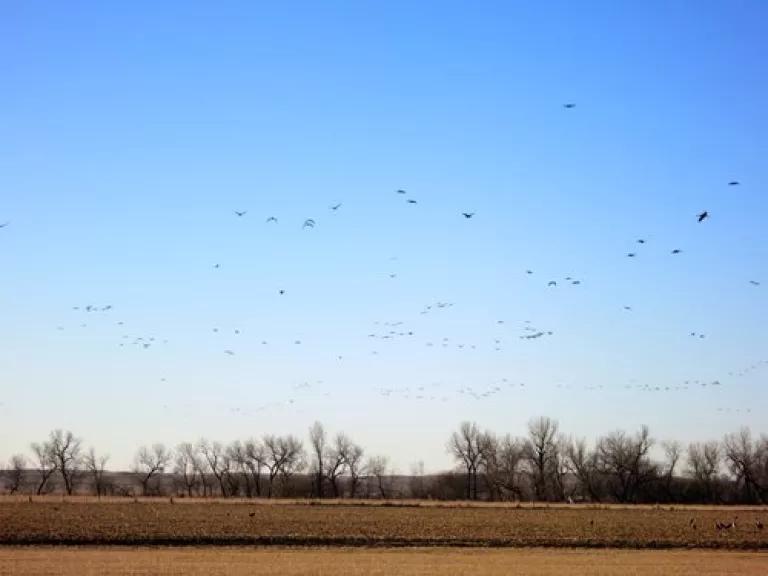
But I saw another tell-tale sign of spring that was even more exciting to me. My dad's cover crops were just starting to emerge from the ground! He planted cereal rye on a few of his fields after harvest last fall to help improve his soil health--his first foray into cover crops.
With harvest running late last year, he wasn't sure if the rye had enough time to grow before the winter freeze, but he was hoping that it would come up strong and healthy this spring. We drove out to see how they were doing on, and we were pleasantly surprised!
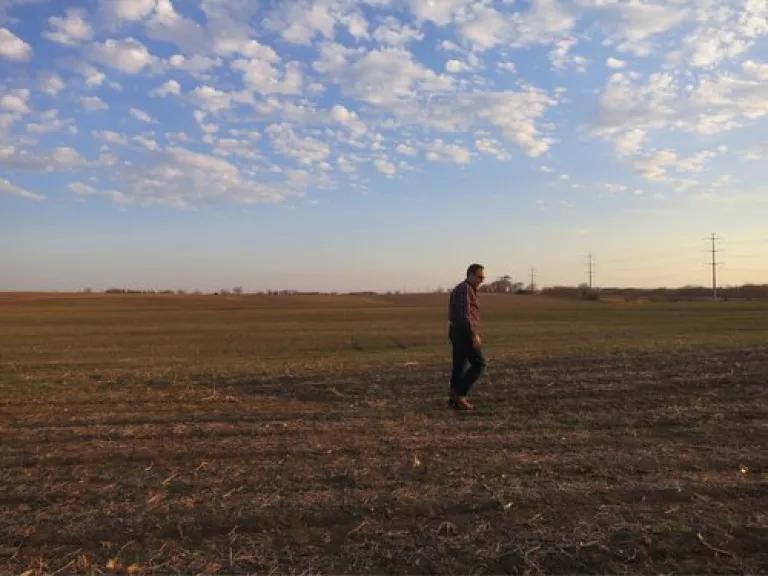
The first field we checked was a soybean field last year--actually, it was the same soybean field I "helped" my dad to harvest during my visit home last fall! The first thing I noticed when we drove up was the soft, green coat covering the field, aesthetically more pleasing than what fields typically look like this time of year. But we were more interested in what was going on beneath the surface, so my dad dug up a few of the rye plants.
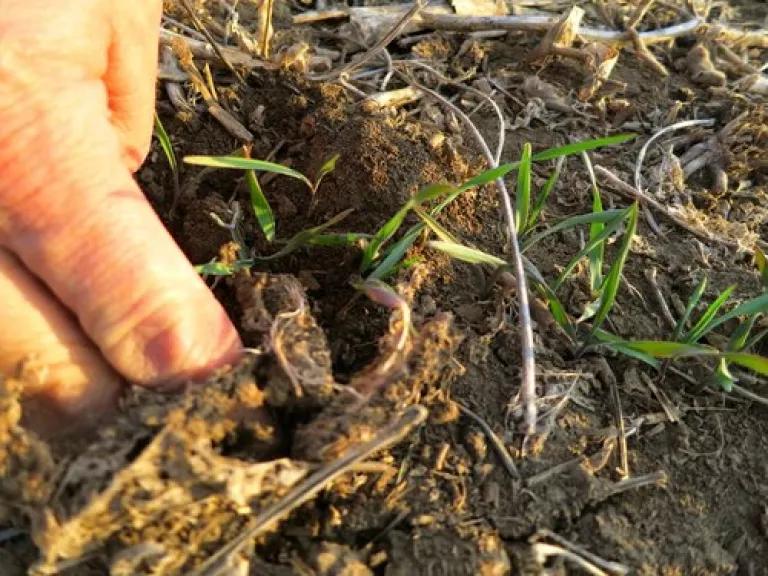
Right away we saw a little earthworm squirming to get away from us--a great sign of healthy soil! But we also noticed that the roots were nice and fibrous, providing lots of good erosion protection. It was actually hard to shake off the soil to get a good picture of the roots!

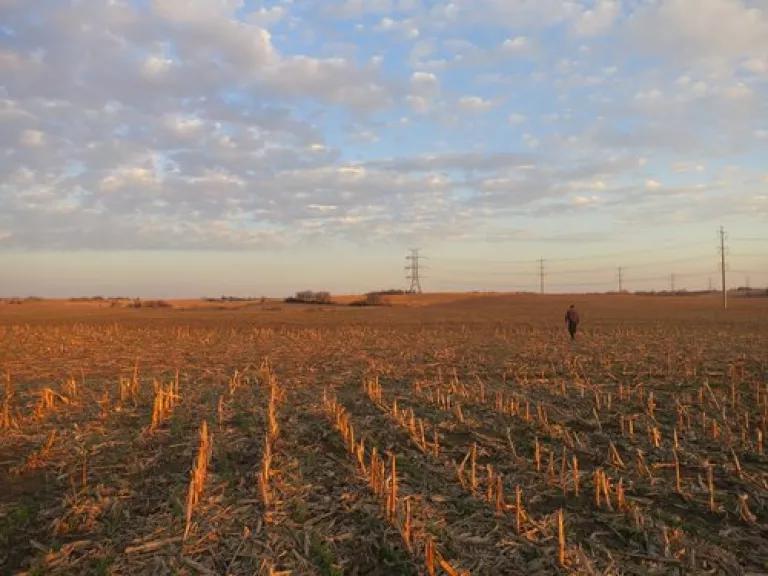
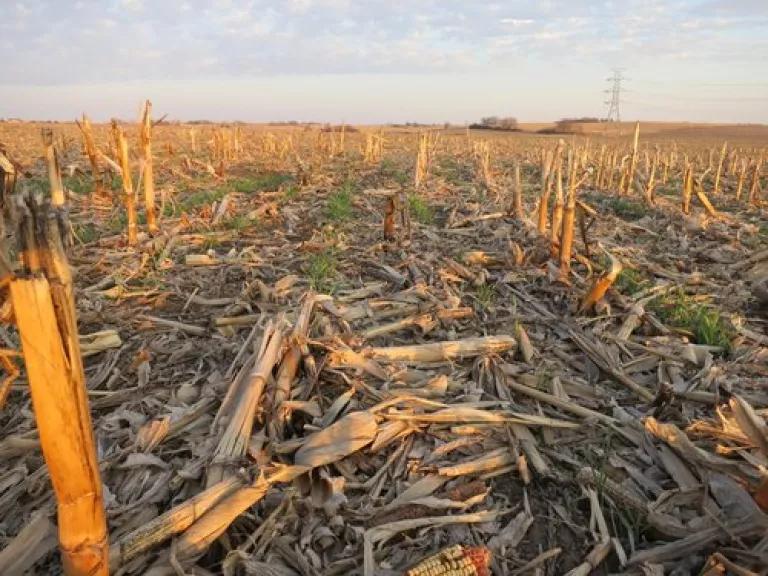
My dad said that next year, he hopes to be able to use planting equipment that will help him plant his cover crops a little more densely, or plant in a criss-cross pattern to fill it in a bit more. For this first year, he just used his existing equipment that is designed for crops that should be spaced out more than cover crops typically need to be. He also said he wants to experiment with different planting times (before, during, and after harvest) and different cover crop mixes to see what will work best for his operation.
We can expect the rye to continue to fill in and provide erosion protection, scavenge and hold any extra nitrogen fertilizer from last year, and help trap spring moisture until my dad is ready to plant his next commodity crops in a few weeks.
All in all, a beautiful spring day in the Good Life!
